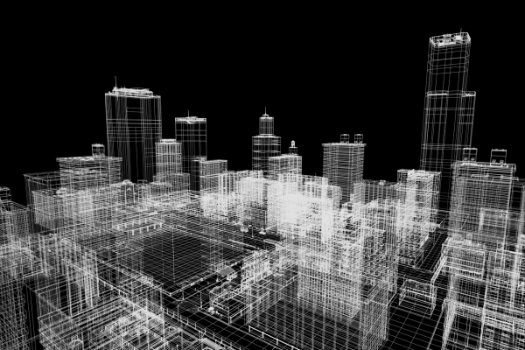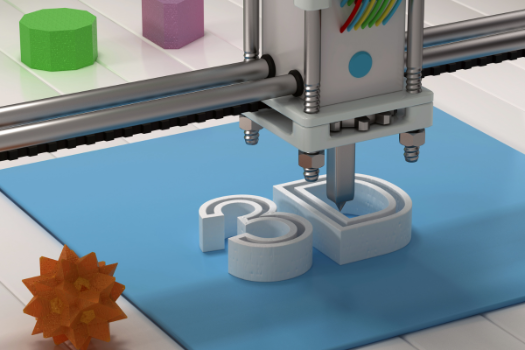.png)
Future of AEC: 5 Innovative BIM Trends
The Architecture, Engineering, and Construction (AEC) industry is rapidly evolving, and Building Information Modeling (BIM) is at the forefront of this transformation. As we move into 2024, several innovative BIM trends are set to shape the future of the industry. These trends are more than just technological advancements; they are redefining how we design, build, and manage projects. By embracing these innovations, AEC professionals can stay ahead in a competitive landscape. In this blog, we'll explore five key BIM trends that are leading the way in 2024, helping the AEC industry build smarter, faster, and more sustainably.
Trend 1: AI and Automation in BIM
Artificial Intelligence (AI) and automation are transforming the way the AEC industry uses BIM. These technologies are making processes faster, more accurate, and less prone to errors. AI can analyze vast amounts of data quickly, helping to optimize project schedules, detect potential issues, and suggest design improvements. For example, AI-powered tools can predict clashes in designs before construction begins, saving time and reducing costs.

Automation, on the other hand, handles repetitive tasks, allowing professionals to focus on more complex aspects of a project. This not only increases efficiency but also improves the overall quality of work. For instance, automated workflows in BIM can streamline everything from data entry to model updates, ensuring that all team members have access to the latest information.
Together, AI and automation are revolutionizing BIM by enhancing decision-making, improving collaboration, and driving innovation in construction. As these technologies continue to evolve, they will play an even bigger role in shaping the future of the AEC industry in 2024 and beyond.
Trend 2: Sustainable Construction Practices
Sustainable construction is no longer just a buzzword; it’s becoming a standard in the AEC industry, with BIM playing a crucial role. As the demand for greener buildings grows, BIM tools are helping architects and engineers design more sustainable projects. These tools allow for precise energy modeling, helping teams create buildings that use less energy and produce lower emissions.

BIM supports the selection of eco-friendly materials by providing detailed information about their environmental impact. This leads to smarter choices that reduce the carbon footprint of construction projects. Additionally, BIM enables better waste management by optimizing material usage, which minimizes waste and lowers costs.
One of the most significant impacts of BIM in sustainable construction is its ability to simulate the environmental performance of a building before it's even built. This means potential issues can be addressed early, ensuring that the final design meets sustainability goals. As we move into 2024, the integration of BIM with sustainable practices will continue to grow, making it an essential tool for any project aiming to be eco-friendly and efficient.
Trend 3: Advanced Digital Twins
Advanced digital twins are becoming a game-changer in the AEC industry. A digital twin is a virtual replica of a physical building, infrastructure, or system. It goes beyond traditional 3D models by incorporating real-time data from sensors and IoT devices. This allows for continuous monitoring and analysis throughout a building's lifecycle.

In BIM, digital twins provide real-time insights that help improve building performance. They enable AEC professionals to simulate different scenarios, such as energy usage or structural stress, and predict how a building will behave over time. This proactive approach can prevent costly repairs and extend the lifespan of structures.
Another key benefit is enhanced collaboration. With digital twins, teams can work together more effectively, using the same up-to-date model to make informed decisions. This reduces errors and improves project outcomes. As technology advances, digital twins are becoming more sophisticated, integrating with AI and machine learning to provide even deeper insights.
In 2024, the use of advanced digital twins in BIM is expected to grow, making them a vital tool for creating smarter, more sustainable buildings. They are not just a trend but a crucial component of modern construction, helping the AEC industry move towards a more efficient and data-driven future.
Trend 4: Interoperability and Connectivity
Interoperability and connectivity are becoming increasingly vital in the AEC industry. As BIM tools and technologies advance, the need for seamless communication between different software platforms is more critical than ever. Interoperability ensures that data can flow smoothly between various BIM applications, making it easier for teams to collaborate, share information, and avoid costly errors.

With better connectivity, cloud-based BIM platforms are allowing teams to work together in real-time, regardless of location. This means that architects, engineers, and contractors can access the same up-to-date models and data, making the entire project more efficient. Improved connectivity also enables better integration of Internet of Things (IoT) devices and sensors, providing real-time data that can be fed directly into BIM models.
The push for open standards, like Industry Foundation Classes (IFC), is also driving greater interoperability. These standards allow different software to “talk” to each other, ensuring that no data is lost in translation. As a result, projects are completed faster, with fewer mistakes and a higher level of precision.
In 2024, the focus on interoperability and connectivity will continue to grow, helping the AEC industry become more integrated and collaborative. This trend is not just about technology but about fostering a more connected and efficient way of working that benefits everyone involved in the construction process.
Trend 5: 3D Printing and Prefabrication
3D printing and prefabrication are revolutionizing the way buildings are constructed. These technologies, combined with BIM, are making the construction process faster, more efficient, and less wasteful. 3D printing allows for the creation of complex, custom building components directly from digital models, reducing the need for traditional manufacturing methods. This not only speeds up the construction process but also minimizes material waste, leading to more sustainable practices.

Prefabrication, another significant trend, involves manufacturing building components off-site in a controlled environment. These components are then transported to the construction site for assembly. BIM plays a crucial role here by ensuring that all parts fit together perfectly, reducing errors and rework. This approach not only saves time but also lowers labor costs and improves the quality of the final build.
The combination of 3D printing and prefabrication with BIM is particularly beneficial for large-scale projects and complex designs. As these technologies continue to evolve, they are expected to play an even bigger role in the AEC industry in 2024. The result is a more streamlined, cost-effective construction process that pushes the boundaries of what’s possible in building design and execution.
Conclusion
The future of the AEC industry is being shaped by these five innovative BIM trends in 2024. From AI and automation to sustainable practices, advanced digital twins, interoperability, and 3D printing, these technologies are transforming how we design and build. By adopting these trends, professionals can work smarter, reduce costs, and create more sustainable and efficient projects. As the industry continues to evolve, staying ahead of these developments will be crucial for success. Embracing these changes not only improves project outcomes but also positions companies as leaders in the rapidly advancing AEC landscape.